Croatian Astronomical Society Call for Turning off Lights for Perseids
August 4, 2022 - Warm August nights in Croatia are a blessing in areas where the air is clean, the surroundings are calm, and there is no light pollution. The country kids know it, rare are the activities that could match lying down with snacks and drinks to watch the Perseid meteor showers. The Croatian Astronomical Society calls for lights off to make a beatiful summer night even better.
As Glas Slavonije writes, like every summer around the memorial day of St. Lovre (August 10), the maximum activity of the Perseid meteor shower occurs. This year, according to forecasts, the maximum will occur on the night between August 11 and 12. Astronomical societies, united in the Croatian Astronomical Union, are organising various astronomical activities, because apart from the most beautiful meteor shower of the year, telescopes will be able to view Saturn and Jupiter, as well as the Moon. The Orion Astronomical Society and the Croatian Astronomical Union are inviting cities and municipalities to turn off public lighting between August 11 and 12 from midnight to morning, so that the residents can enjoy this celestial spectacle as much as possible.
“We invite all citizens to a joint observation from the location of Bajera from 10 pm, in addition to which an observation of the night sky with a telescope will be organized. As the 12th ARLA Festival, whose theme is space, will also take place at that time, we ask the City of Đakovo to turn off public lighting on August 12 from 10 pm, in order to continue the observation from the lawn below Strossmayer Park. An average activity of about 140 meteors per hour is forecast, and the conditions for observation will be reduced by the fact that the Moon is almost full”, points out the president of the Orion Đakovo Astronomical Society, Danko Kočiš.
Kočis also provided instructions for observation. “Do not look directly at the radiant (starting point of the meteor shower), you will notice the least meteors there, no special equipment (telescopes, binoculars, etc.) is needed to observe meteors, because meteors are observed with the naked eye lying on the ground, and it is necessary to spend at least 30 minutes in the dark to allow your eyes to adapt to the night conditions. You need to move away from the area where there is lighting and light pollution into as good a darkness as possible. Also, you need a mat, a deck chair, or a sleeping bag on which you can lie down during observation”, instructs the president of the Astronomical Society Orion Đakovo, Danko Kočiš.
For more, check out our lifestyle section.
Lastovo Island of Stars Project Being Revived with Astronomical Activities
February 22, 2021 – The Croatian Astronomical Union is reviving the project "Lastovo Island of Stars" by measuring the night sky quality and organizing astronomical activities for citizens and tourists.
After ten years, Dorian Božičević, Secretary-General of the Croatian Astronomical Union, visited Lastovo again. Together with Diana Magdić, Deputy Director of the Lastovo Tourist Board, at whose invitation he arrived, they visited potentially interesting Lastovo locations for astronomical observations and the installation of cameras to monitor Croatian, i.e., the Global Meteor Network's meteors.
Lastovo – Croatia's next dark sky park?
For Lastovo to apply for the International Dark Sky Park status, they agreed on further cooperation to start measuring the night sky quality. Besides, they decided to organize astronomy activities for citizens, tourists, and children.
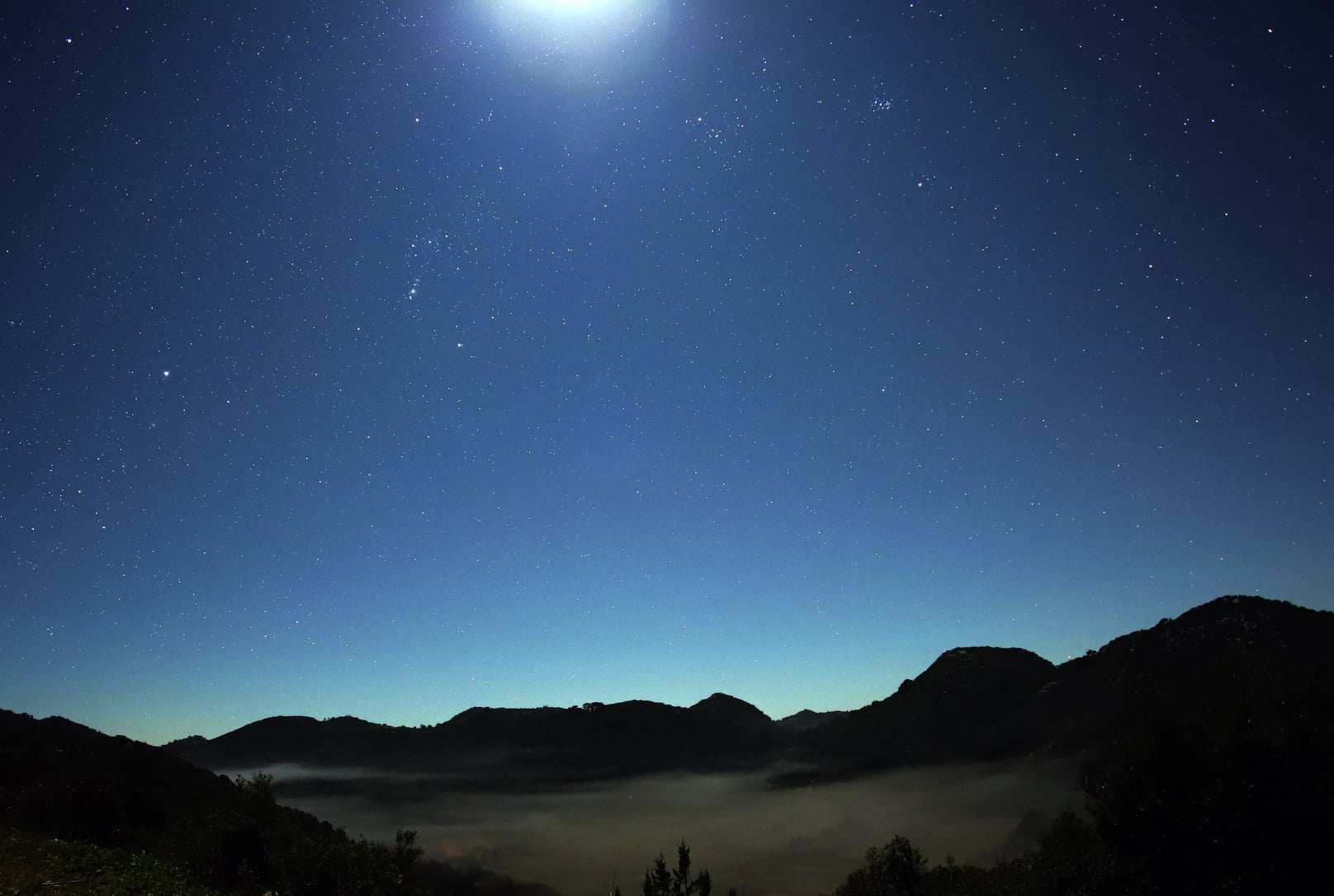
Winter sky over Prgovo / Dorian Božičević, Lastovo Tourist Board
By official definition, the dark sky park label is awarded to protected nature areas with extremely dark skies full of stars. Two places in Croatia hold this label – Petrova Gora in Banovina and Vrani Kamen on Papuk. Also, Jelsa on Hvar is well on its way to becoming the third dark sky park in Croatia, and it seems like Lastovo could potentially be the fourth.
Božičević and Magdić hope for the cooperation of all institutions on the island so that the project "Lastovo Island of Stars" really comes to life. They also plan to hold a meeting with the Lastovo Islands Nature Park's representatives and the Municipality of Lastovo.
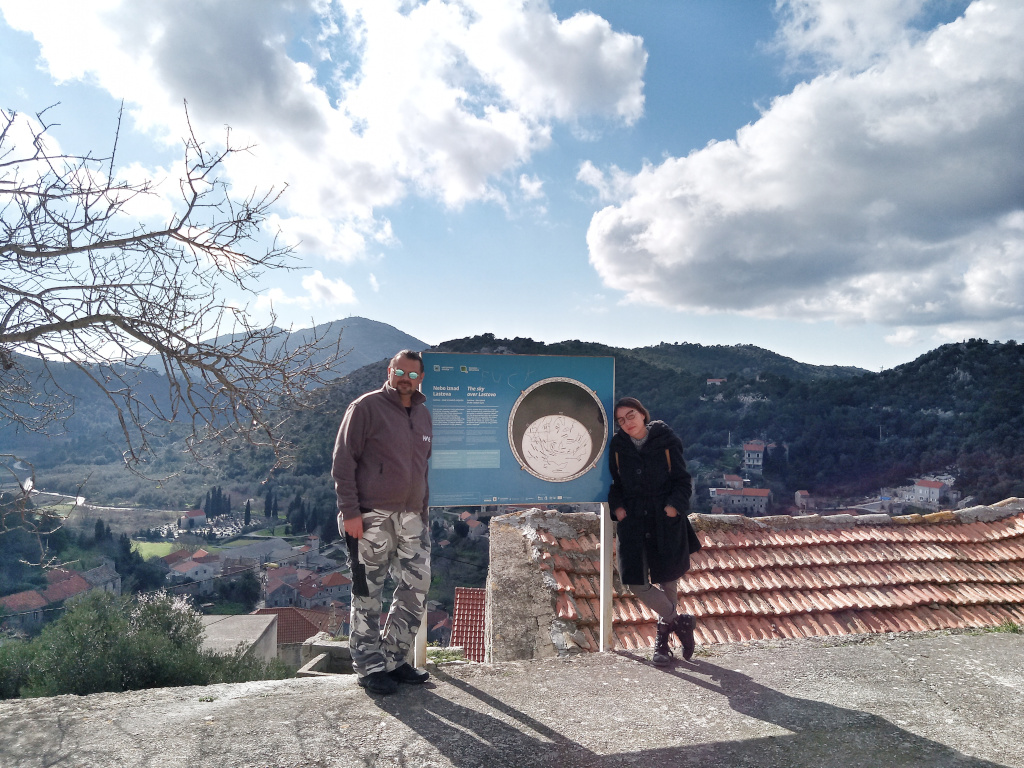
Dorian Božičević and Diana Magdić with a rotating map of the sky in Lastovo / Croatian Astronomical Union
Their goal is to bring astronomy to life in Lastovo's tourist offer and to ensure continuous extracurricular activities in astronomy for children and youth.
First Croatian municipality with ecological lighting
The Croatian Astronomical Union recalled that from 2008 to 2010, the International Conference on Dark Sky Parks had been held in Lastovo. However, due to a lack of financial resources and some other circumstances, the project stalled with development.
At that time, Lastovo began the reconstruction of public lighting. Little is known that Lastovo was the first local government in Croatia with completely ecological lighting, even before the adoption of regulations on protection against light pollution.

Lastovo / Romulić and Stojčić
In 2010, a workshop in astronomy for elementary school students was organized on Lastovo. Then, the initiative for the establishment of the astronomical society Lastovo was also launched, as well as the initiation of the International Dark Sky Park proclamation.
Stargazing as a symbol of Lastovo
Lastovo is the most distant inhabited Croatian island, and thanks to the distance from the mainland and pollution, stargazing here leaves you breathless.
The town of Lastovo, also the only settlement on the Lastovo island, is an old medieval settlement rich in history. Hills surround it with amazing views of the surrounding fields and the crystal clear sea. In addition to the dark Lastovo sky, the symbol of Lastovo are the richly decorated chimneys, the so-called "fumari," which adorn Lastovo's family houses from the 15th and 16th centuries.

Lastovo's chimney - "fumar" / Romulić and Stojčić
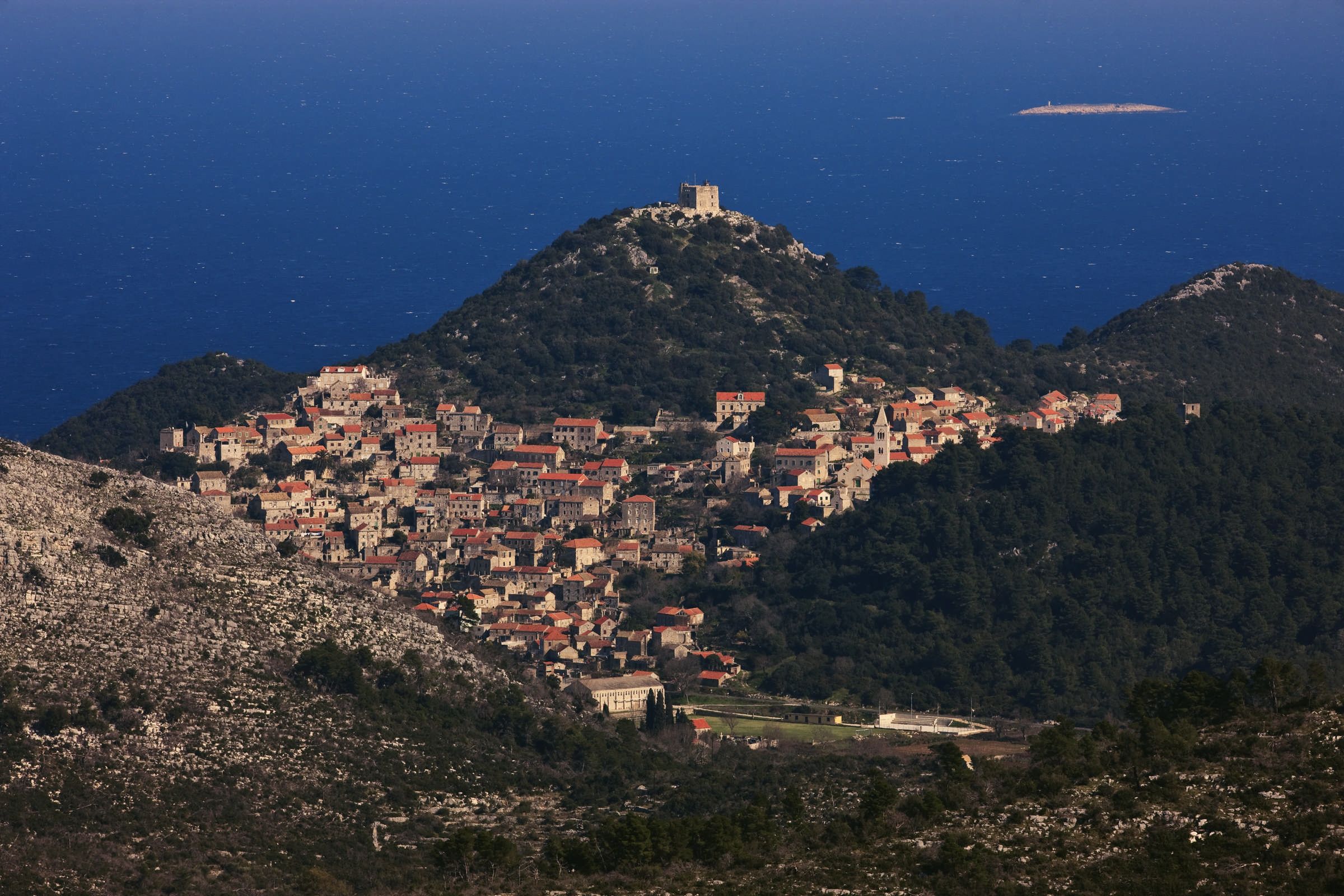
The town of Lastovo / Romulić and Stojčić
For the latest travel info, bookmark our main travel info article, which is updated daily.
Read the Croatian Travel Update in your language - now available in 24 languages.
Sky's the Limit! Visnjan Observatory Crowdfunding Campaign A Success!
January 18, 2021 – The Visnjan Observatory Crowdfunding Campaign has been successfully completed. With 1.300.000 kuna collected, new generations of future Croatian scientists will get a new geodesic dome, accommodation facilities, and a location for testing robotic telescopes.
One of the most prominent Croatian organizations that have been educating future Croatian scientists for several decades will soon be adorned with new equipment and accommodation facilities for many students who have been coming to Višnjan for years to learn about astronomy.
Monitoring and detecting asteroids, but also educating future scientists
The Višnjan Observatory has been at the very top of the world for more than 40 years when it comes to tracking and detecting asteroids, these potentially hazardous and mysterious celestial bodies. According to that, this small observatory in the heart of Istria is ahead of the American NASA. It is one of the five most important observatories for measuring the position of newly discovered objects that could pass close to the Earth.
Its founder, award-winning Croatian astronomer Korado Korlević, is one of the most successful asteroid hunters globally and, according to Minor Planet Discoverers, is the 18th most productive asteroid hunter of all time.

Višnjan Observatory / Copyright Romulić and Stojčić
Between 1995 and 2000, the Observatory discovered over 1,400 new asteroids and two comets. Monitoring and detection of asteroids is undoubtedly an important scientific activity of the Observatory, but perhaps even more important and invaluable for Croatia is the educational function of the Observatory.
The Višnjan Observatory hosts many highly motivated and gifted primary and secondary school students in its practical science camps every year. Some of the former attendees are now scientists at NASA, JPL, and other world-renowned scientific institutions, and some of them are yet to become so.
'Investing in children is the largest and only profitable investment'
In early December last year, TCN reported on a crowdfunding campaign launched to improve the educational capacity of the Visnjan Observatory. Already then, at the very beginning of the campaign, they raised 50 percent of the targeted funds, or 306,000 kuna (the first goal was to raise 635,000 kuna). This enabled them to ensure a beautiful geodesic dome, resembling a habitat on Mars, in which lectures will be held.
Aco Momčilović, the campaign's project manager, says the speed of collecting the donations somewhat surprised the team. However, given the very positive feedback from all who donated, they decided to raise the ultimate goal.
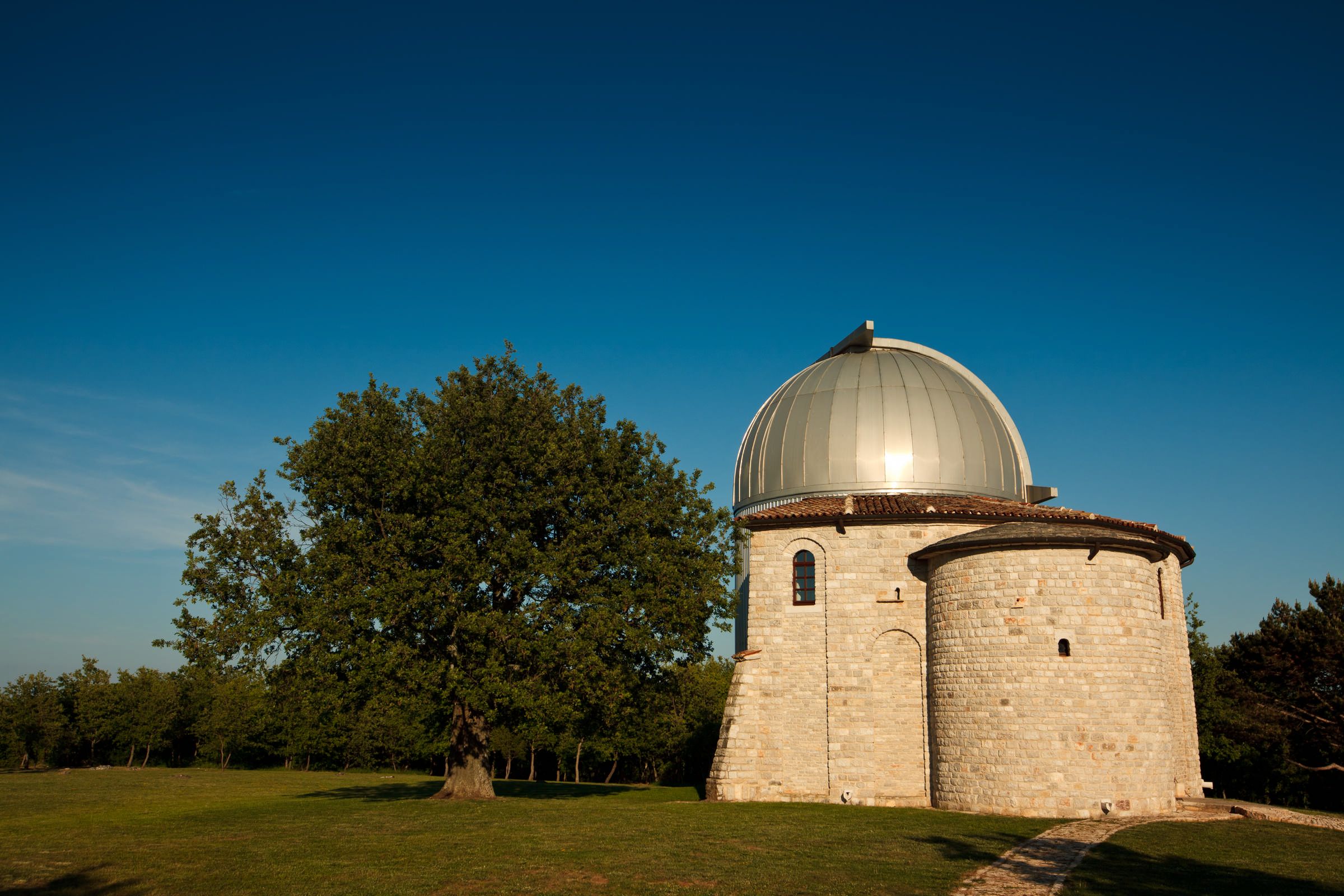
Višnjan Observatory / Copyright Romulić and Stojčić
As they soon achieved the first goal, they continued to increase it over the next month. At the end of the campaign, on January 15, 2021, they collected as much as 1,300,000 kuna, or almost ten percent more than the ultimate goal of 1,185,000 kuna.
This now enables them to build bungalows, accommodation facilities for children, but also their professors, mentors, and other supporters. Since the educational camps last for several days, the Višnjan Observatory wants to make everyone feel comfortable during that time.
With the donations received, Korado Korlević plans to establish a location for testing robotic telescopes and additional accommodation facilities for students. Investing in children, he says, is the largest and only profitable investment.
Construction of new facilities expected this year
Even after the campaign officially ended, people still donate money, which is an excellent indicator of the Višnjan Observatory's influence, as well as the respect for Korado Korlević's hard and dedicated work.
"I also see this campaign as a mini-movement, an initiative that unites different segments of society – entrepreneurs and their companies, scientists in Croatia and abroad. I already know that this action has encouraged some to launch similar campaigns aimed at improving education for young people and promoting science and other long-term most valuable aspects of society," says Momčilović.
Now follows the less visible but even longer part of the job – completing the administration and transferring money, and then launching and achieving the listed goals.
Hopefully, part of the necessary bureaucracy for construction works will be completed by the middle of this year so that the construction of new facilities could start as soon as possible. Depending on the suppliers, the construction works should begin within six months.
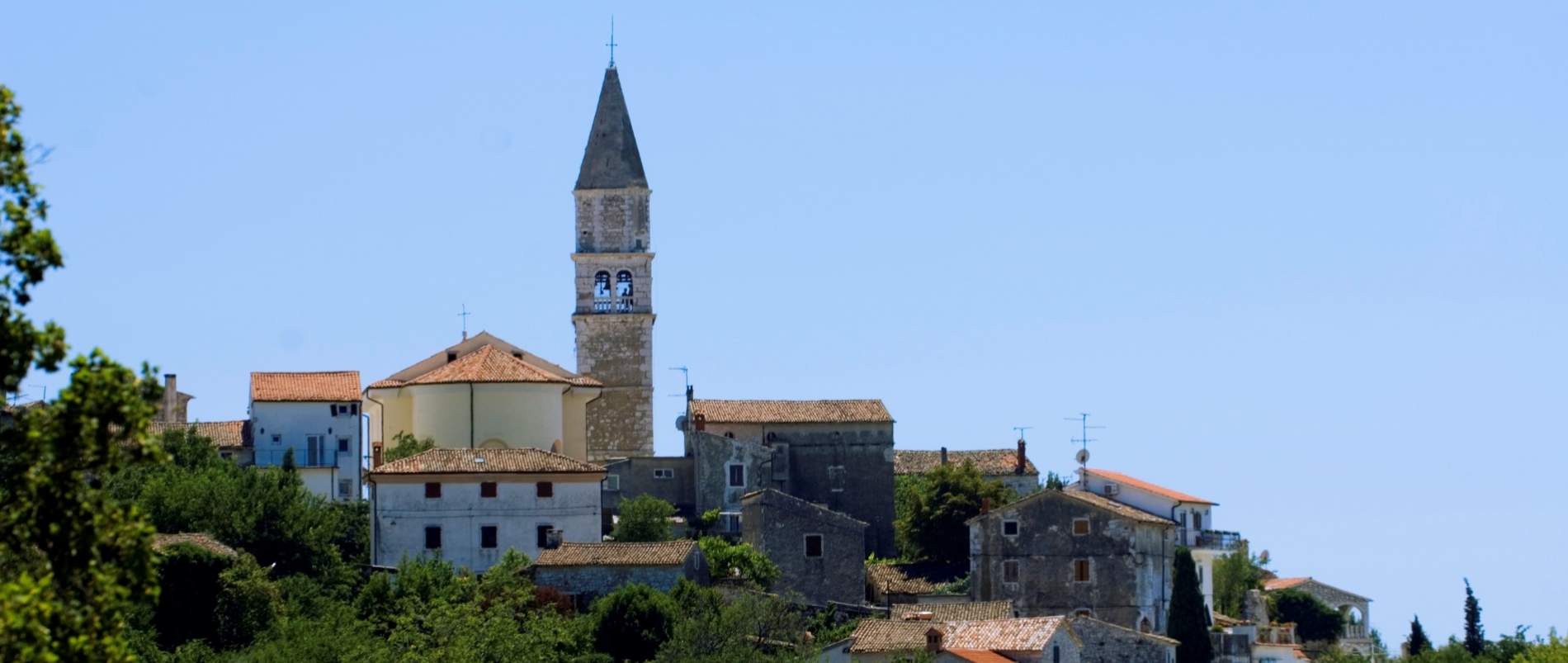
Apart from being known for the Observatory, the small town of Visnjan is rich in historical heritage / Photo: Istrian County Tourist Board
Biggest donators to enjoy gala dinner with Korado Korlević
At the start of the campaign, no one could have predicted that numerous donations would have to be targeted at the quake-hit area by the end of December. Despite that, the desired amount of 1,185,000 kuna was successfully collected for the educational purposes of the Višnjan Observatory.
Organizers believed that support for science would not lack even in the challenging 2020, when science, critical thinking, and the knowledge of future generations are particularly under attack.
"December was an interesting choice. We couldn't do the campaign earlier because not everything was ready. In late December and early January, most of the donations were certainly diverted to earthquake-hit areas. Still, it was interesting to see that we continued to receive donations and that some people obviously donate in more places or still see educational projects as a goal," says Momčilović.
In those six weeks, how long the campaign lasted, about 2500 people donated funds, proving how many people are willing to support science and youth education. To thank the donors, the organizers decided to provide them with "rewards."
Namely, the most generous donors will enjoy a gala dinner with Korado Korlević this year. In contrast, others will be able to participate in his exclusive lectures in the inspiring environment of the Višnjan Observatory, where they will look through telescopes and learn about observing the night sky in Istria in search of asteroids. Some will meet Korlević and ask everything about the universe through the online webinar "Ask the Astronomer," planned for the first half of 2021.
All donors had the opportunity to make electronic thank you notes. A plaque with all major donors' names will be printed in Višnjan on the new facilities' opening day in late 2021 or 2022.
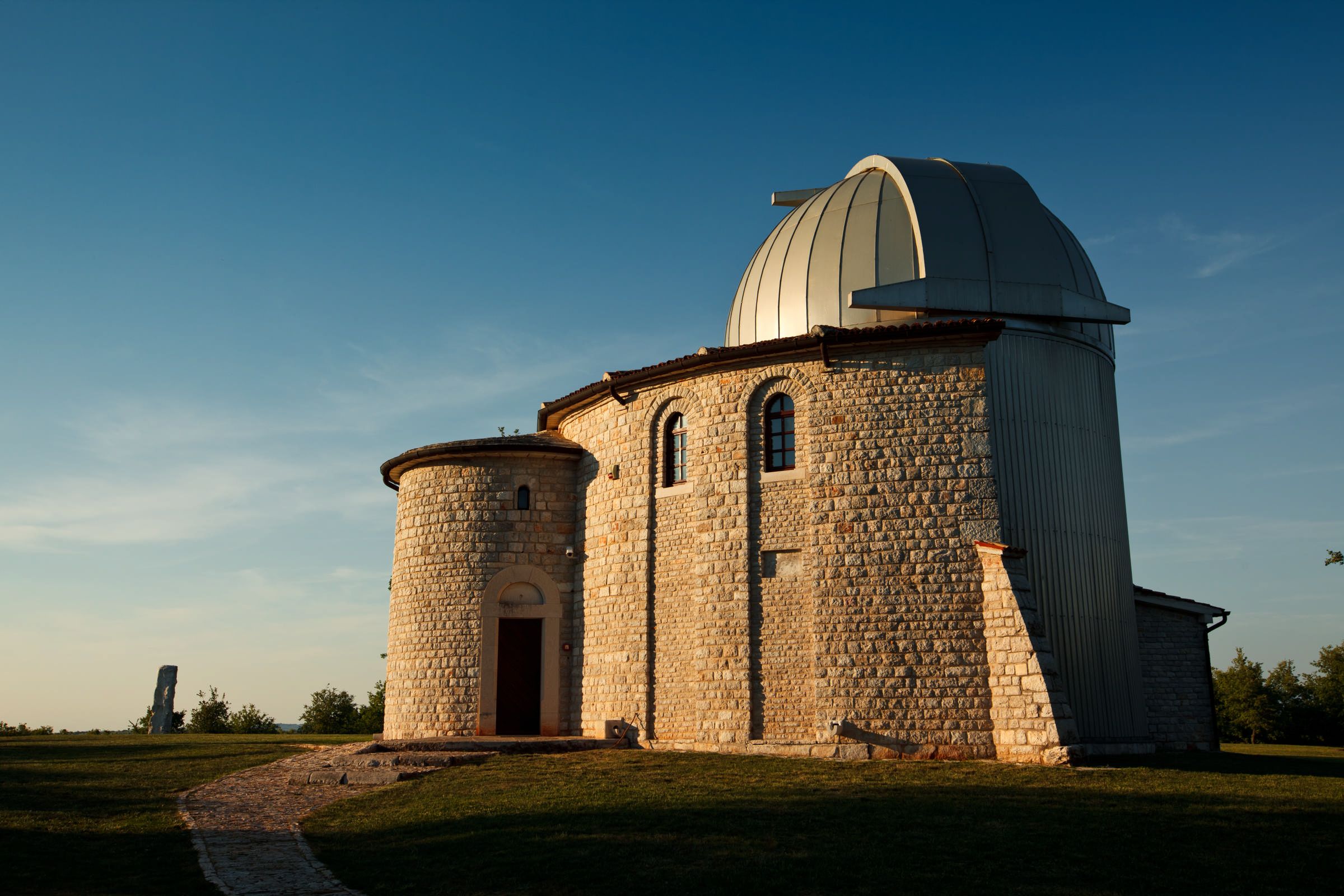
Višnjan Observatory / Copyright Romulić and Stojčić
After this campaign, they want to realize another technological improvement in the Višnjan Observatory, but they still have time to decide on a new campaign.
'The smarter the children, the more society progresses'
As Momčilović explains, this campaign is unique because it does not solve one individual problem at a time but invests in the long-term improvement of children's educational opportunities.
Unfortunately, there will always be a need for humanitarian actions, but he and the core team got involved in this action because they believe that in this way, they support the broader system.
"The smarter and more educated children we have, the more society progresses. With this campaign, we did not aim to solve one of the many burning problems, especially in this post-earthquake time, but to create a part of the system that will give the greatest return on investment in the long run," Momčilović points out.
Unfortunately, most of the donation resources are spent inefficiently, and only about 1 percent of the 'smartest' donations make up almost the entire total global contribution. Therefore, Momčilović says, perhaps the Višnjan Observatory crowdfunding campaign is "the beginning of a smarter and more thoughtful view of humanitarian work."
Winter Solstice 2020: Jupiter and Saturn Align in Night Sky Tonight
December 21, 2020 – At around 4.30pm this evening, Saturn and Jupiter will align creating a Christmas star. It will be very brief, as the planets will quickly fall below the horizon on Winter Solstice 2020. It has been 800 years since this event occurred in the night sky.
Every day is extraordinary, depending on your perspective. But, today, 21st December 2020, is extraordinary on an interplanetary scale.
Here on earth, for us in the northern hemisphere, today is the Winter Solstice 2020, the shortest day of the year, the day with the least amount of sunlight and the official start of winter. With our Vitamin D-deprived skin sensing more than a minor chill, it's a day we'd probably prefer to be over rather quickly.
However, hundreds of thousands of kilometres above us in the night sky, an event some 800 years in the making is about to happen. Tonight, at around 4.30pm in the evening, the gas giants Saturn and Jupiter will align creating a Christmas star for Winter Solstice 2020. If you can see the night sky at that time, the occurrence will be visible with the naked eye and the planets together may look like one huge star. The distance between them will only be one-tenth of a degree, around the width of a coin held at arms length.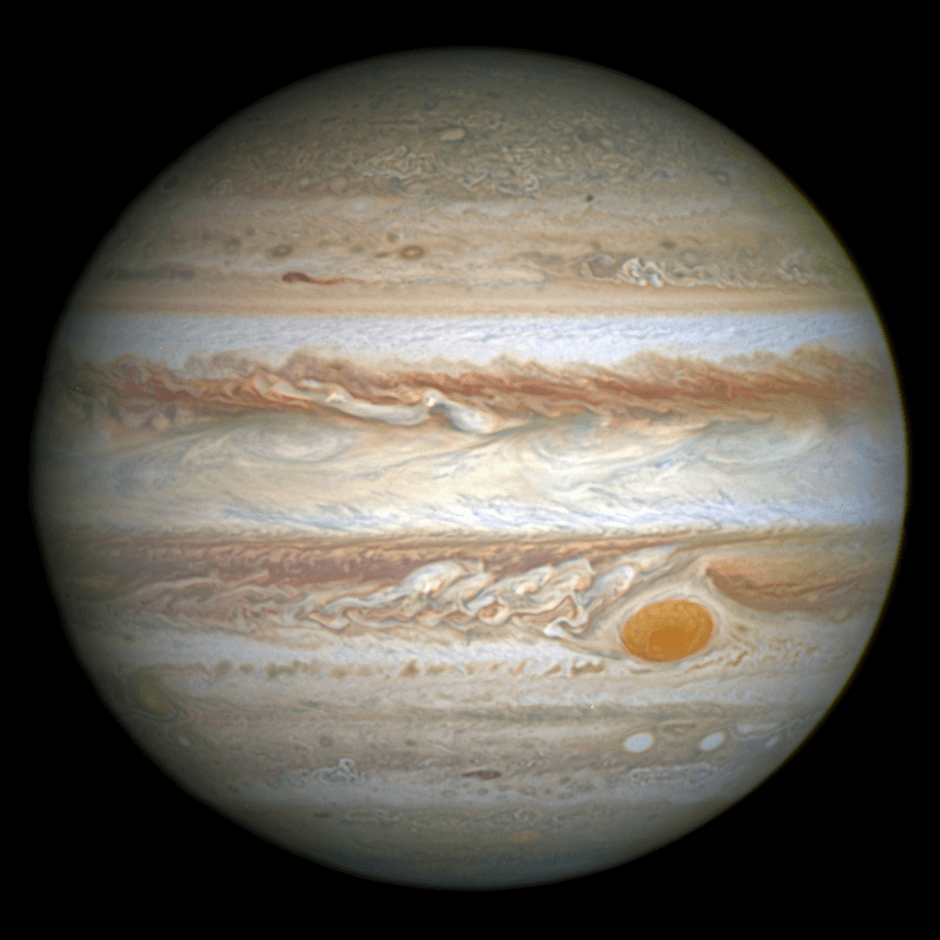 Jupiter is the largest planet in our Solar System and has a total mass that is two-and-a-half times greater than that of all the other planets in our Solar System combined. It is one of the brightest objects visible to the naked eye in the night sky, second only to the Moon and Venus.
Jupiter is the largest planet in our Solar System and has a total mass that is two-and-a-half times greater than that of all the other planets in our Solar System combined. It is one of the brightest objects visible to the naked eye in the night sky, second only to the Moon and Venus.
The great conjunction that we will see on the Winter Solstice 2020 has not happened since 1623. However, that alignment wasn't visible to skywatchers across much of the Earth because of its location in the night sky. The last time this event was visible in the night sky was in 1226.
Jupiter takes some 12 years to make one full orbit around the sun. Lying further out and moving more slowly, it takes Saturn some 30 years to make its own journey around the star. These two planets pass each other on their circular tracks every 20 years, coming relatively close to one another. However, their orbits do not occur on exactly the same axis, meaning that the planets very rarely align. That they will tonight is an extremely rare happening.
Of course, the planets aren’t really coming that close to one another. Jupiter, the largest planet in our solar system, is 886,440km from the Earth and Saturn, the second-largest, is another 733,205km beyond it. Saturn is the second-largest planet in our Solar System. It is named after the Roman god of wealth and agriculture, after whom we also name Saturday - Saturn's Day. Saturn is famous for the rings which circle the planet. These are made mostly of ice particles, with some rock and dust. The planet has at least 82 moons that we know of, separate from the small moonlets that lie within its rings. Titan, Saturn's largest moon, is the second-largest moon in our Solar System, and is larger than the planet Mercury. It is the only moon in our Solar System to have a substantial atmosphere of its own.
Saturn is the second-largest planet in our Solar System. It is named after the Roman god of wealth and agriculture, after whom we also name Saturday - Saturn's Day. Saturn is famous for the rings which circle the planet. These are made mostly of ice particles, with some rock and dust. The planet has at least 82 moons that we know of, separate from the small moonlets that lie within its rings. Titan, Saturn's largest moon, is the second-largest moon in our Solar System, and is larger than the planet Mercury. It is the only moon in our Solar System to have a substantial atmosphere of its own.
The 'Christmas Star' of the Winter Solstice 2020 may be rare, but it is not the first time it will have captivated those looking into the night sky. Some people speculate that this very astronomical incident may be the same one that, according to the Bible, led the three wise men to Joseph, Mary and the newly born Jesus. That is not just modern speculation. The theory that Jupiter and Saturn's conjunction might be the source of the Star of Bethlehem was proposed in the early 17th Century by Johannes Kepler, a German astronomer and mathematician. Certainly, 2,000 years ago, at the time of Jesus's birth, people would have been acutely aware of what was happening in the night skies above them. With no man-made pollutants in the air and almost no light pollution at all, the stars in the sky would have been a vivid spectacle. If not the TV screens of its day, the night sky would certainly have been a backdrop more integral to every day than it will be for many with multiple modern distractions on Winter Solstice 2020.
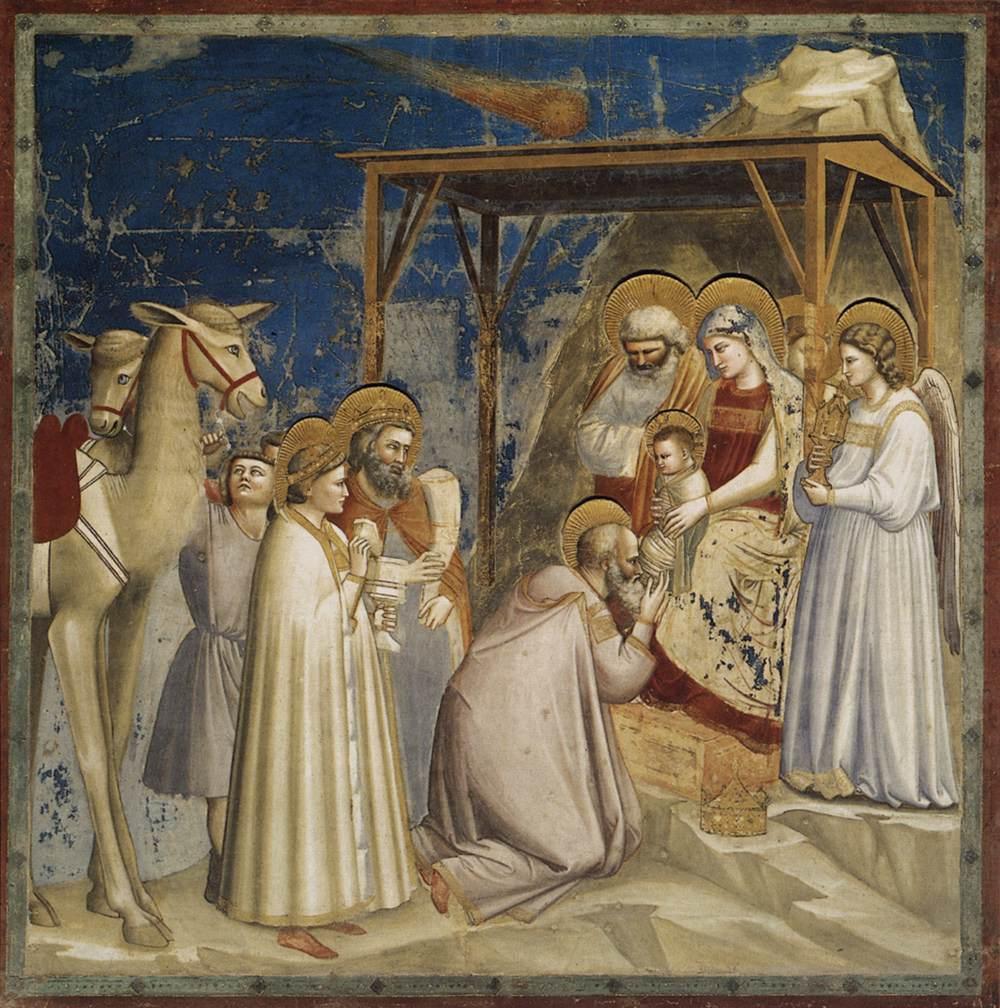 Giotto di Bondone - No. 18 Scenes from the Life of Christ - 2. Adoration of the Magi (1303). The Star of Bethlemhem is depicted at the top of this fresco.
Giotto di Bondone - No. 18 Scenes from the Life of Christ - 2. Adoration of the Magi (1303). The Star of Bethlemhem is depicted at the top of this fresco.
The coastal areas of Croatia look like they will have the clearest skies on Winter Solstice 2020, particularly in southern Dalmatia, where you have the best chance to see the event. But, you never know. You should have a glance to the heavens wherever you are this evening – the event will be visible across much of the planet, just after dark.
To be in with the best chance of seeing the conjunction, look outside at around 4.30pm. You'll have to be quick – in relative terms, the event won't actually take place over a short period of time but, because this is the Winter Solstice 2020, the two planets are very low in the night sky and will pass quite fast beyond the horizon. You should look in a south-westerly direction and keep your eyes quite low.
Give it a go wherever you are – it's unlikely you'll be here in another 400 years when it will happen again. If you have cloudy skies above you tonight, you can still look for the aftermath of the alignment the planets will be incredibly close to one another for the next few days. And, if you get a photo of the conjuncture of Winter Solstice 2020, TCN would love to hear from you.
All images used lie in the public domain, except main image, a composite made by TCN
Crowdfunding Campaign Launched for Visnjan Observatory
December 11, 2020 – A crowdfunding campaign aimed at raising 635,000 kuna was launched to expand the existing and build the new educational capacities of the Visnjan Observatory, the third-best in the world in the number of detected asteroids that are a potential threat to life on Earth.
Located on the edge of the western Istrian plateau, Visnjan Observatory is probably the most prominent Croatian organization that has educated future Croatian scientists for several decades.
At the beginning of December, a group of volunteers launched a large crowdfunding campaign in its favor and in favor of the Astronomical Society of Visnjan, the association that manages the Observatory. The goal is to raise 635,000 kuna by the end of December, and the Astronomical Society Visnjan will invest the donated funds in the construction of new education facilities.
The worth of investing in children
If the campaign raises 300,000 kuna, a new geodetic dome will be built, which will enable the maintenance of larger educational and practical programs. If the campaign reaches the target of 635,000 kuna, additional bungalows will be built where the Visnjan Observatory will accommodate a larger number of children, their professors, and mentors.
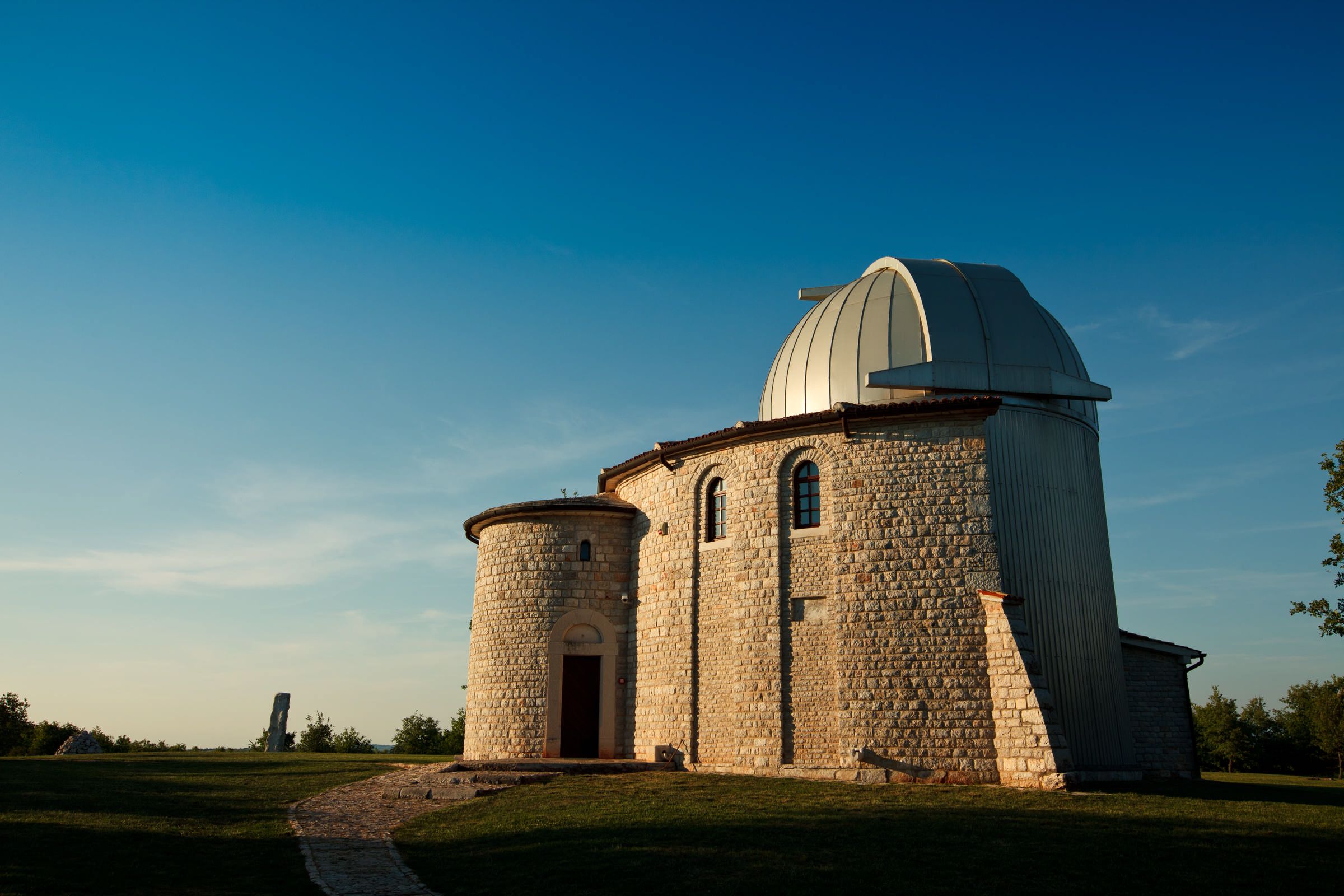
Visnjan Observatory / Copyright Romulić and Stojčić
In case the collected amounts exceed the target amount of 635,000 kuna, the head of the Visnjan Observatory, prominent Croatian astronomer Korado Korlević plans to establish a location for testing robotic telescopes and additional capacity to accommodate students. This award-winning communicator and selfless knowledge-giver, at the same time, one of the most successful asteroid hunters in the world, believes that investing in children is the most significant and only investment worth working for.
Educating future NASA scientists
The Visnjan Observatory is Croatian pride at the global level, both scientifically and educationally. For forty years, it has been at the very top of the world in tracking and detecting asteroids, which are potentially very dangerous for life on planet Earth. That is why this small Observatory in the heart of Istria is even ahead of the American NASA.
During 2018 and 2019, the Observatory discovered and documented over 1,400 asteroids. However, although the monitoring and detection of asteroids is a significant scientific activity of the Visnjan Observatory, for Croatia, it is even more important for educating children and youth about science, technology, and the entire STEM field.
So far, thousands of primary and secondary school students have attended educational programs here. Some of these children are now adults working as scientists in prominent Croatian and world scientific institutions, such as NASA and JPL.
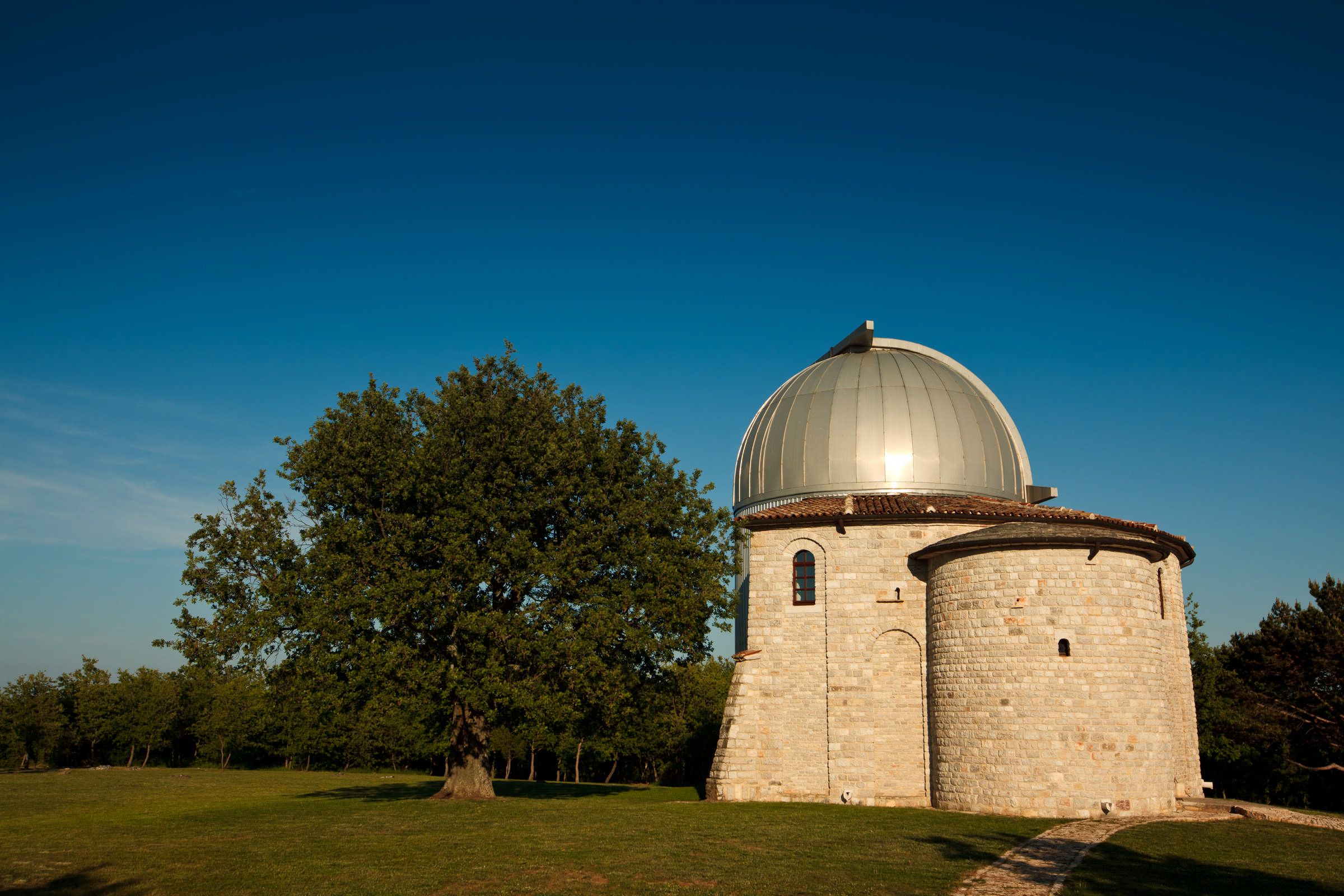
Visnjan Observatory / Copyright Romulić and Stojčić
Some of today's scientists who discovered the first mysteries of the cosmos as kids attending the educational programs of the Visnjan Observatory are Mario Jurić and Vernesa Smolčić. Today, Mario Jurić is s professor and director of the DiRac Institute at the University of Washington in Seattle, USA.
"Schools and work in Visnjan have shown me that there are no limits to possibilities. They have shown me that with a lot of work, creativity, self-belief, and great mentors, a group of kids from Croatia can build something competitive with the strongest observatories in the world. Let us never ask ourselves can we do something, but rather how we could do it," says Jurić.
Today, Vernesa Smolčić is an astrophysicist and a professor at the Department of Physics, Faculty of Science, University of Zagreb.
"Visnjan was my turning point in terms of breaking down mental limitations. With Korado, everything just clicked in me," says Smolčić.
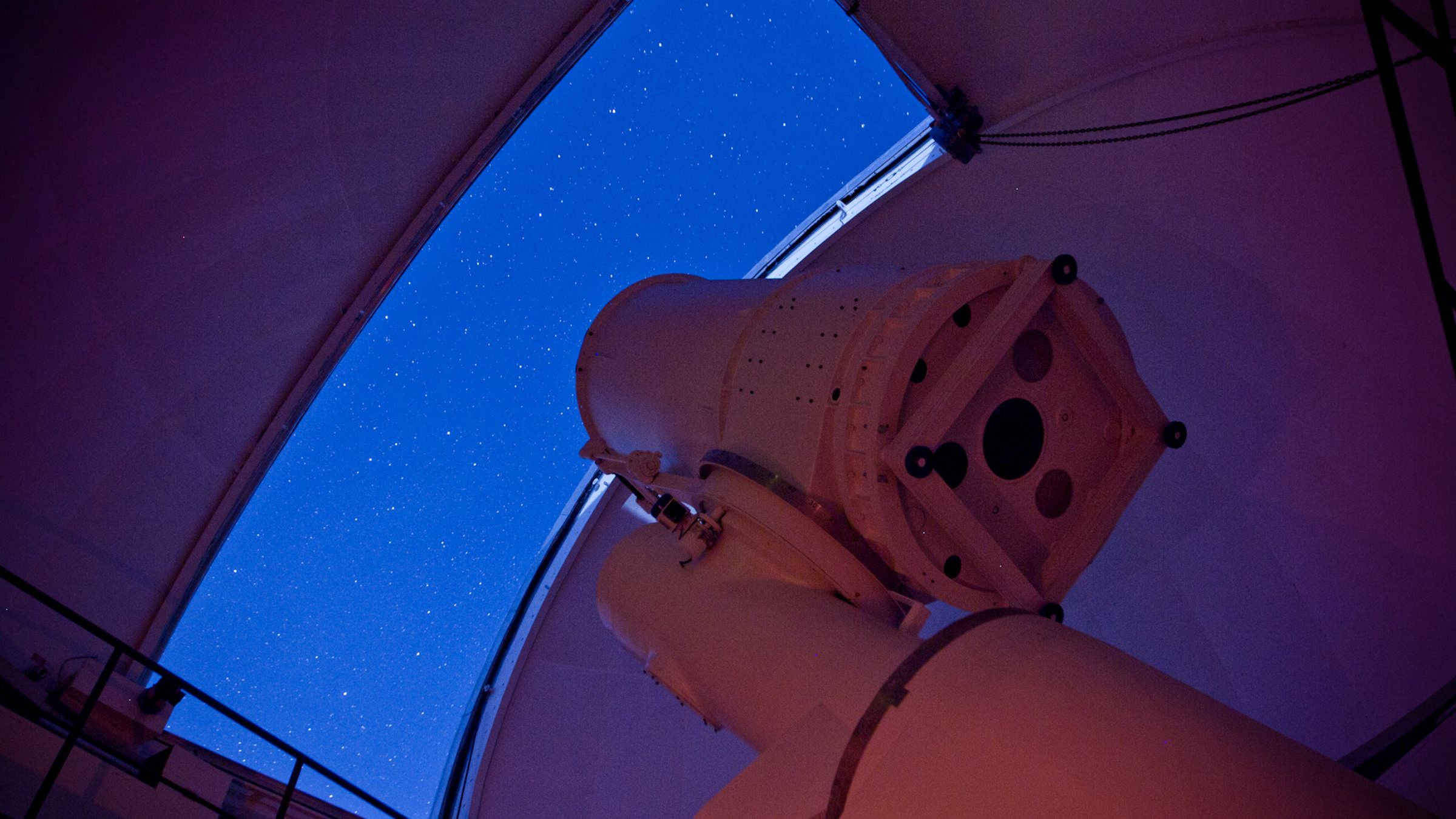
Visnjan Observatory / Copyright Romulić and Stojčić
Gala dinner awaits big donors
Visnjan Observatory has managed to do all this with very modest capacities, based on volunteer work and donations. That is why this crowdfunding campaign is one of the larger actions taken to make the Visnjan Observatory accept, accommodate, and educate a significantly larger number of children and youth in its educational camps as early as 2021.
"I invite science lovers and people in Croatia and abroad who care about the education of our children about science and technology to support the campaign with donations, as much as anyone can. You can donate any amount, say 25 kunas or more. If you can't donate now or later, it also helps to share a link to an ongoing campaign. We hope that large donors will join too because an exclusive gala dinner with Korado Korlević has been prepared for them," said Aco Momčilović, head of the crowdfunding campaign.
Donations can be given on the Croatian platform croinvest.eu, and the contribution can be paid via a simple payment slip, via internet banking, credit cards, and even via cryptocurrencies. By writing this article, 50 percent of the targeted funds, or 306,000 kunas, had been raised.
Source: croinvest.eu, astro.hr.
To read more about lifestyle in Croatia, follow TCN's dedicated page.
Supermoon to Mark First Day of 2018
January 2018 will be marked by two supermoons
Wish Upon a Star: Celestial Show to Take Place on December 14
The middle of December might not seem like the best time to go roam the wilderness at night, but an upcoming event is worth leaving your house before dawn
Ten New Asteroids Discovered by Višnjan Observatory
Great news from the Croatian astronomical community!
An Astronomical Affair at Bačvice
This Friday June 17, Bačvice will host a public viewing of the night sky with telescopes! The observation will begin when it first gets dark at about 21h, and will last until about 23h.


